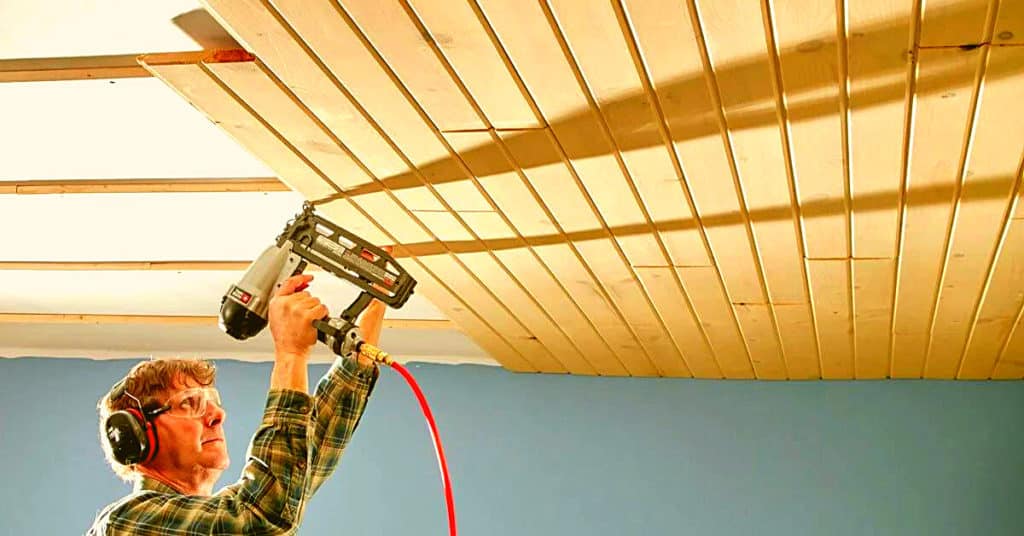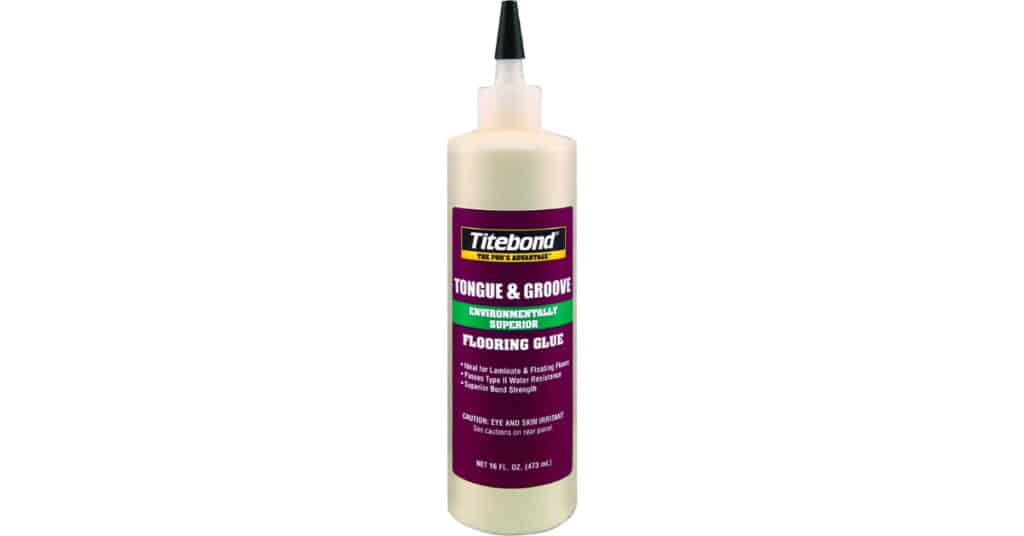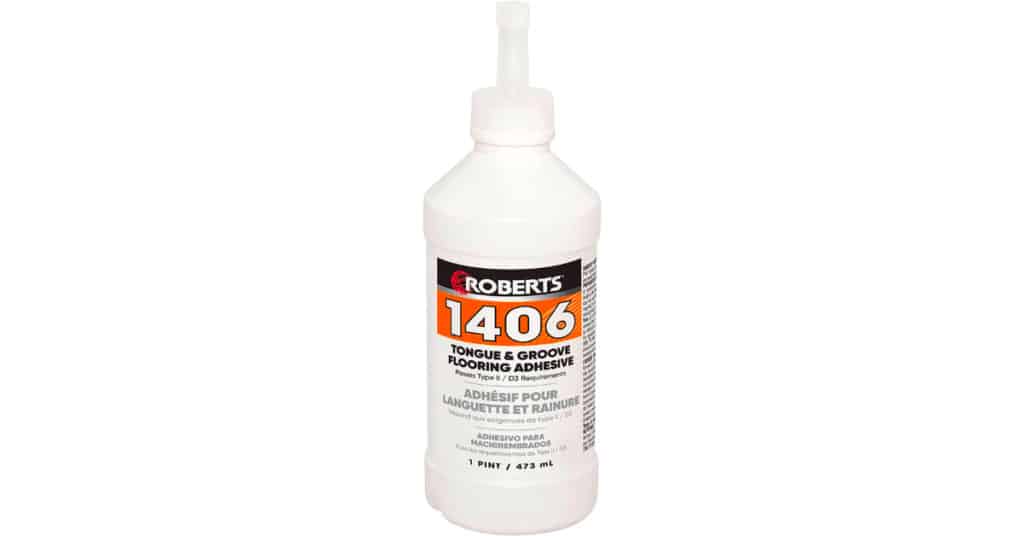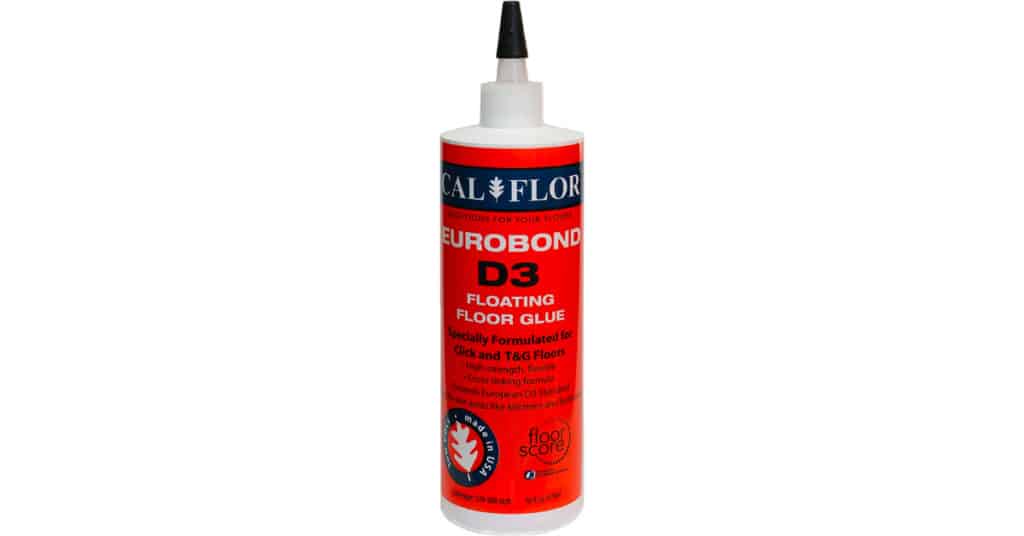How do you choose the best glue for tongue and groove flooring? That’s what we’re going to talk about today, but first, let’s discuss why you would want to use glue in the first place rather than nail down or nail up the flooring.
Tongue and groove wood flooring have many advantages – it’s affordable, durable, and comes in various styles, so you can find an option that perfectly matches your home’s decor. But how do you make sure it lasts? By choosing the suitable adhesive, of course!
Read More: Best Panel Bonding Adhesive
What Is The Best Glue For Tongue And Groove Flooring?
In-depth research led my team and me to confidently select Titebond Tongue and Groove Glue as the best choice for adhesive in tongue and groove flooring projects.

Image: familyhandyman
Best Glue for Tongue and Groove Flooring
Titebond 2104 Tongue and Groove Glue

Quick Rundown:
- Dimensions: 2.44 x 2.44 x 9.25 inches
- Weight: 1.06 pounds
- Compatible Material: Wood
- Color: White
- Coverage: 100 to 200 Feet
- Super Strong
- Water Resistant
If you want fast-drying glue for your flooring needs, consider Titebond 2104 Tongue and Groove Glue. It is water-resistant and comes with a nice cap that makes it easy to use and prevents spills.
This slow-drying Titebond 2104 Tongue and Groove Glue will allow plenty of time to assemble the flooring, but not so much time that it prohibits the new room from being used.
This specially-formulated adhesive provides strong adhesion with the wood fibers of tongue and groove flooring, guaranteeing that it’ll stay intact longer without it. You don’t need clamps because it is so precise when using this product.
Even though the label says the product provides 100 feet of coverage, we found it covers around 200-300 feet. Regardless, it is advised to follow the manufacturer’s instructions.
If you need a little more help with installation, videos on YouTube show how to install tongue and groove flooring with this type of glue.
ROBERTS 1406-P Flooring Adhesive

Quick Rundown:
- Dimensions: 2.4 x 2.4 x 7.5 inches
- Weight: 1 pound
- Compatible Material: Wood
- Color: White
- Coverage: 400 lineal feet per pint
- Super Strong
- Water Resistant
Roberts Flooring Adhesive Primer provides the strong, long-lasting bond required for installing wood flooring. With its flip-top applicator lid, this all-in-one formula can be applied quickly.
This water-based formula is zero VOC, non-flammable, and non-toxic, so it’s safe to use around kids and pets.
In addition to the fact that it is water resistant, this product is also fragrance-free. With this, you won’t have to worry about any bad smells in your home or office.
If you buy four bottles of adhesive, it will cover 1000 square feet of wood. The glue seems easy to use and viscous, but it sets quickly, so you need to work quickly when installing the boards.
The adhesive also dries very well and easily controls the amount that comes out of the bottle.
Cal-Flor GL82114CF Eurobond D3 Floating Floor Glue

- Dimensions: 9.25 x 2.5 x 2.5 inches
- Weight: 1.17 pounds
- Compatible Material: Wood
- Color: White
- Coverage: 125 to 200 linear ft.
- Super Strong
- Water Resistant
Cal-Flor Floating Floor Glue is a perfect product for wet spaces such as washrooms and kitchens, but it can also be used on Tongue & Groove flooring.
The product earned D3 certification in the US and was designed to protect against water damage.
Using this water-based adhesive, you can bond wood panels together quickly and easily via hand or machine. The glue can be applied with a brush or machine, and it bonds a wide variety of wood types.
It has good durability and adhesion to most hardwood floors, particle board, and plywood surfaces.
Tongue and Groove Adhesive vs. Wood Glue
Two main types of adhesives are used for tongue and groove flooring: wood glue and tongue and groove adhesive.
Wood glue is typically less expensive, but it can be more challenging to work with because it requires a precise application.
Tongue and groove adhesive is more expensive because it is a premium wood glue, but it is easier to use because it can be applied in a wider bead. Ultimately, the best adhesive for your project will depend on your budget and your level of expertise.
You may want to invest in a higher-quality product if you’re an expert. If you’re not experienced with carpentry or other DIY projects, I recommend using wood glue.
Whatever type of adhesive you choose, make sure that you read all directions before applying!
How do you glue T&G flooring?
Tongue and groove flooring is a popular type of hardwood flooring. The individual boards have a tongue on one side and a groove on the other, which interlocks the boards together. Gluing tongue and groove flooring differs from other hardwood floors as you need to use an adhesive that will bond well with the wood and the surface below. Here are four tips to help you choose the best glue for your tongue and groove flooring project:
1) Look for an adhesive compatible with your wood: For example, if you’re using oak T&G flooring, look for glues like titebond III or titebond IV. These two products work well with oak because they have some flexibility to them. When using these adhesives, clean up any excess residue, so it doesn’t end up seeping out between the boards later in the installation process.
2) Consider what material you’ll be attaching the flooring to: If you’re attaching your new T&G flooring onto a concrete subfloor, then epoxy glue might be your best option. Epoxy has stronger bonds than most water-based glues and does not require a primer before application (which means less prep time).
3) Figure out how much coverage you’ll need: To calculate this number, multiply length x width x thickness (or planks per square foot). Be aware that there are differences in coverage depending on the thickness of your boards; thicker boards might only take one gallon while thinner ones might take more.
4) Choose a water-based adhesive over oil-based: Oil-based glues can leave stains on your T&G flooring, whereas water-based glues are non-toxic and environmentally friendly.
Should I glue tongue and groove boards?
Is tongue and groove glue the same as wood glue?
Last Opinion
Lastly, if you’re looking for the best glue for tongue and groove flooring, we recommend Titebond Polyurethane Construction Adhesive. It’s strong, versatile, and easy to use. Plus, it’s waterproof and can be used indoors and outdoors. Thanks for reading!

